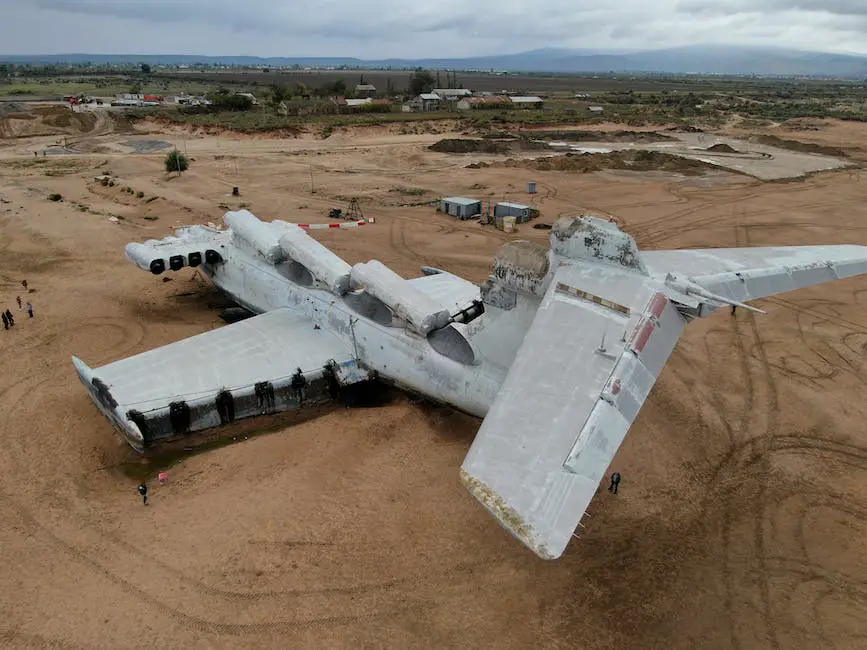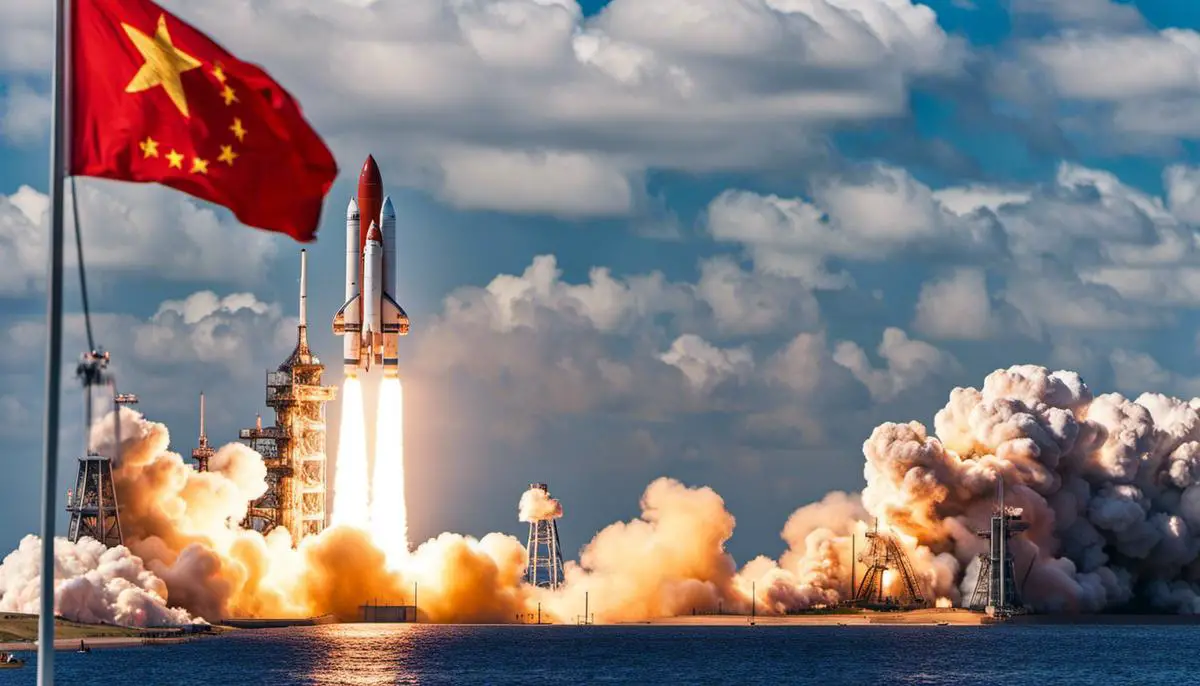In the mid-twentieth century, a staggering chess match played out not on a board, but in the vastness of space. The Cold War, a period of political tension and rivalry between the superpowers of the USA and USSR, instigated the spectacle of the Space Race.
The unyielding desire for supremacy, not just in terms of land but also in the realm of technological advancements, manifested in a series of extraordinary space missions.
Consequently, the Apollo missions, which were borne out of this rivalry, were not merely scientific quests, but geopolitical instruments aimed at demonstrating dominance. These missions became a source of nationalism, increasing public engagement, and yielding scientific breakthroughs, which continue to shape our technological landscape today.
Contents
Origins of the Space Race: Cold War Context
The Cold War: A Crucial Backdrop
The Cold War, a global power struggle between the United States and the Soviet Union, set a pivotal backdrop to the Apollo missions.
Soon after the end of the Second World War, an ideological battle between Communism and Capitalism manifested as an intense arms race. However, the focus wasn’t just on military weaponry; it extended to technological prowess and symbolic demonstrations of supremacy, including dominance in the exploration of space.
The Start of the Space Race
In the race for geopolitical leverage, both superpowers strove for innovation and advancement to overpower their adversary. It’s within this context that the Space Race, a subrace within the Cold War, formed.
When the Soviets successfully launched the Sputnik satellite in 1957, it shocked the world and set a gauntlet for the United States to pick up. America’s response didn’t take long.
The Formation of NASA
In 1958, President Dwight D. Eisenhower signed the National Aeronautics and Space Act into law, establishing NASA. This new agency inherited the earlier programs from its predecessor, the National Advisory Committee for Aeronautics (NACA), laying the groundwork for America to delve into space exploration.
However, NASA was not just about technological advancement; it was a strategic move in a chess game of universal proportions, created as a concerted reaction to Soviet successes and to underline American competitiveness.
The Spark of the Apollo Program
The Apollo program was born out of this fierce competition. It became a manifestation of American resolve to demonstrate its dominance not just on Earth, but in space as well.
The goal, outlined by John F. Kennedy was bold: to land a man on the Moon and return him safely to Earth. This ambitious aspiration was a profound statement and a clear indication of the lengths the United States was willing to go to claim leadership in this new frontier.
The Influence of Politics
The Apollo missions were more than just an exercise in science and technology. They were a form of soft power, calculated in proving American superiority over the Soviet Union.
Every milestone, from Apollo 1 through to Apollo 17, was scrutinized and projected as a demonstration of the country’s technological capability, economic might, and ideological superiority. The Cold War context was a driving force, infusing every decision and course action related to these missions.
Triumph amidst Tension
The intricate tapestry of the Cold War served as a relentless motivator for the success of the Apollo missions. These historic endeavors not only resulted in groundbreaking technological advancements but also actualized the daring ambition of landing twelve astronauts on the moon’s surface.
However, it is essential to recognize that this achievement wasn’t solely a testament to the pursuit of scientific excellence, but also the by-product of intense geopolitical pressures brought forth by the Cold War between the United States and the Soviet Union.
In the grand chessboard of twentieth-century global conflicts, this conquest symbolized a triumphant checkmate in the Space Race, a narrative deeply entwined within the threads of the Cold War.

Political and Public Engagement
The Cosmic Battlefield of Cold War
When reflecting upon the Apollo missions, the heightened political milieu of the era provides crucial context. This period of human exploration beyond terrestrial boundaries unfolded in the throes of the Cold War rivalry between the United States and the Soviet Union. With various arenas of competition, extraterrestrial expeditions became another stage for asserting superiority.
President John F Kennedy conceptualized the Apollo missions as the USA’s gambit in this cosmic competition against the Soviet Union’s parallel space efforts. These missions carried the weighted expectation of affirming not just the technological prowess, but also the ideological dominance of the United States. They symbolized the unique intellectual liberty fostered by a democratic and capitalist society – a powerful testament to American superiority during the Cold War.
Public Perception of the Space Program
In the midst of this, public perception and interest in the Apollo missions played a critical role in garnering support for the program. The government harnessed this enthusiasm to rally public opinion in favor of the missions, presenting them as heroic journeys into unknown territories that embodied American courage and innovation. Events such as the Apollo moon landing were widely televised and viewed by millions, reinforcing national unity and contributing to the atmosphere of patriotism.
People were captivated by astronauts, who served as symbols of American determination and courage. This popular fascination with space travel opened educational and employment opportunities in the fields of science, technology, and engineering, which the United States government heavily promoted in a bid to win the technological race against the Soviet Union.
Uncertain Times, Bold Missions
Though the Apollo missions were primarily scientific and exploratory in nature, they held a deep symbolic value. The Apollo missions occurred during a time when the threat of nuclear warfare loomed large, and fear and uncertainty marked U.S.-Soviet relations.
The successful landing on the moon served as a beacon of hope and a significant morale boost for the American public.
Furthermore, the breathtaking images of Earth captured during the Apollo missions served as a powerful reminder: despite political divisions and ideological differences, we all inhabit the same, fragile planet. These images helped to humanize and personalize the Cold War, redirecting focus towards the commonality among all humans, irrespective of national boundaries.
Transforming Cold War Tensions into Space Diplomacy
The chill of the Cold War gradually melted into a stage for collaboration and partnership. It all set a stage with the Apollo-Soyuz Test Project in 1975, the first-ever cooperative mission jointly executed by the United States and the Soviet Union.
Looking back, the Apollo missions are not just remembered due to their wonderful technical triumphs, they also left an indelible mark for its profound contribution in shaping the geopolitical context. They shed light on the prospects of universal cooperation even amidst traditional adversaries, spearheading the movement towards peaceable utilization of space.
Scientific Impact of the Apollo Missions
The Space Race: The Cold War’s Lasting Legacy
In the midst of the Cold War, two superpowers took the center stage after the end of World War II – The United States and the former Soviet Union. Locked in a quiet but intense conflict marked by political strain and economic rivalry, a parallel contest for technological leadership began to unfold. This vibrant backdrop acted as a catalyst for scientific and technological propulsion, greatly influencing and steering the direction of NASA’s Apollo missions during this period.
Space: The New Frontier
The space race became a critical aspect of Cold War rivalry. Much to the chagrin of the United States, Soviet Union established its early dominance in space exploration by launching Sputnik, the first artificial satellite, in 1957. The Soviets clinched another victory by sending the first human, Yuri Gagarin, into space in 1961. In an effort to reclaim the narrative and display its own capacities, the United States accelerated its Apollo program. The Apollo missions were not just a showcase of scientific progress but a testament to political might and technological prowess – to surpass the Soviet Union in this newfound frontier.
Crisis spurs Innovation
The Apollo missions, driven by the desire to win the space race, led to a remarkable outpouring of scientific achievements and technological innovations. The pressure to intrude further into space necessitated the creation of complex machinery and novel technologies. The Saturn V rocket, the largest vehicle ever launched into space, was developed specifically for the Apollo missions. This titanic machine, required to launch a manned mission to the moon, was a major breakthrough in aerospace engineering and continues to inspire current designs.
The moon landing in 1969 by Apollo 11, in particular, emphasized the phenomenal efforts and resources that had been channeled into the mission. The Apollo Lunar Module, the craft that allowed astronauts Neil Armstrong and Buzz Aldrin to land on the moon’s surface and return safely to the Command Module, was an unprecedented creation, its design and operation serving as a testament to American innovation and engineering audacity.
Inventions for the World
From the heated competition of the Cold War sprung invaluable everyday inventions. Miniaturized electronics, developed to save crucial payload weight on launch vehicles, enabled the creation of compact computers and electronics that power our digital world today. The Apollo Guidance Computer, one of the first to use integrated circuits (microchips), essentially kickstarted the revolution of miniaturized computing.
In order to keep astronauts safe, NASA developed innovative fire-retardant textiles that are now widely used in firefighting uniforms and aircraft seats, as well as insulation materials that enhance energy efficiency in homes across the world.
Pinpointing Our Place in the Universe
The lunar samples collected during the Apollo moon missions significantly boosted our understanding of the moon – the celestial body nearest to us. These samples unveiled billions of years of history, offering clues to the moon’s formation and its geological evolution. By extension, they’ve enabled scientists to hypothesize on the origins of our own planet and the broader solar system.
The heightened atmosphere of the Cold War period meant that the Apollo missions were viewed as more than just lunar explorations. They stood as symbols of national determination, human courage and technological excellence. Challenged by harsh competition, the boundary of scientific advancements was deeply pushed, creating a significant and lasting impact. These scientific and technological accomplishments from the Apollo missions continue to influence various fields, laying a firm foundation for future space explorations.

Post-Apollo Era and Cold War Conclusions
The backdrop of the Cold War period, a time characterized by military and political tension between the United States and the Soviet Union, heavily influenced the Apollo missions. The launch of these missions was a peak moment in the Space Race, a significant element of this superpower rivalry.
The Apollo moon landings were not just an extraordinary achievement in human exploration and scientific discovery but also stood as strong indicators of America’s technological and geopolitical dominance. The objectives of NASA during this period were deeply entwined with the dynamics of the Cold War, striving to showcase American superiority just as much as aiming for space discoveries.
Post-Apollo Era and the Cold War Conclusions
After the Apollo missions concluded in 1972 with Apollo 17, the United States had unequivocally demonstrated its space dominance. However, the geopolitical landscape was changing. The Vietnam War was ramping down, and relations between the United States and Soviet Union were starting to thaw, entering the détente phase of the Cold War.
Even though the Apollo missions were concluded, both superpowers continued their space exploration programs, albeit with less rivalry and more cooperation. For example, in 1975, the Apollo-Soyuz Test Project saw American astronauts and Soviet cosmonauts meet and shake hands in space, an event which symbolized the easing tensions.
Impact on International Relations
The Apollo moon landings not only marked America’s victory in the Space Race but also fundamentally altered the course of the Cold War. The successful missions reaffirmed the United States’ position as a global leader in science and technology, pushing the Soviet Union into a position of playing catch-up. This consolidation of American technological superiority indirectly influenced many areas of Cold War competition, from the arms race to trade relations.
Legacy in a Post-Cold War World
Even as the Cold War ended in the early 1990s, the shadow of the Apollo missions lingers on. They set the precedent for numerous space exploration initiatives. The International Space Station, for instance, although a product of multinational cooperation, is a testament to the technological standards set by Apollo.
Furthermore, the Apollo missions have left an indelible mark on American culture and global perceptions of the United States. They epitomize American ingenuity, ambition, and the spirit of exploring new frontiers.
Similarly, they set the bar for future space exploration, creating the impetus for our current age of potentially commercial space travel and the renewed interest in returning to the Moon and beyond.
The Cold War may have initially driven the Apollo missions, but their influence transcends this period, influencing space exploration and international relations in a post-Cold War world. To this day, the Apollo missions remain a critical touchstone of scientific advancement and an enduring symbol of American achievement.
As the Apollo missions drew to a close, their profound influence left a lasting imprint on the world. The fruits borne out of intense pressure and competition transcended beyond the original adversaries. After the dust from the race to the moon settled, the globe was irrevocably changed.
The Space Race, deeply woven in the fabric of the Cold War, saw its termination intertwined with the end of this political rivalry, signifying a new era of space exploration with different objectives. Arguably, the Apollo missions’ legacy has never truly left us. It persists in the advancements we enjoy today and will continue to inspire future explorations, proving that sometimes, the sky is just the beginning.

With a passion for unraveling the mysteries of the moon, Dr. Luna Sterling is a highly-respected astrophysicist, a dedicated lunar enthusiast, and a captivating blogger. After earning her Ph.D. in Astrophysics from the Massachusetts Institute of Technology (MIT), she served as a lead scientist and mission planner for NASA, contributing significantly to various lunar missions.
For over two decades, Luna has been at the forefront of lunar science, pushing boundaries and pioneering discoveries that have enriched our understanding of the moon’s geological history. However, it’s her infectious enthusiasm for all things lunar that truly sets her apart.
In an endeavor to bring the moon closer to everyone, Luna started her blog, “Luna’s Lens: A Closer Look at the Moon.” With this platform, she offers a unique blend of intriguing moon facts, updates on lunar missions, and personal anecdotes from her experiences in the field, all told in an engaging and accessible manner.
Luna’s unique blend of scientific expertise and warm, humorous writing style has transformed complex astrophysics into compelling narratives that captivate her audience. As a gifted communicator, she leverages her knowledge and experience to relate scientific facts to everyday life, thus making her blog a must-read for both seasoned space enthusiasts and curious newcomers.
Interactive and inviting, Luna frequently encourages reader engagement through thought-provoking discussions and a monthly ‘Ask Dr. Luna’ feature, where she personally answers questions about the moon and space exploration. A celestial storyteller at heart, Dr. Luna Sterling’s passion for the moon is as vast as the cosmos she explores, making her an invaluable beacon in the world of lunar science.
